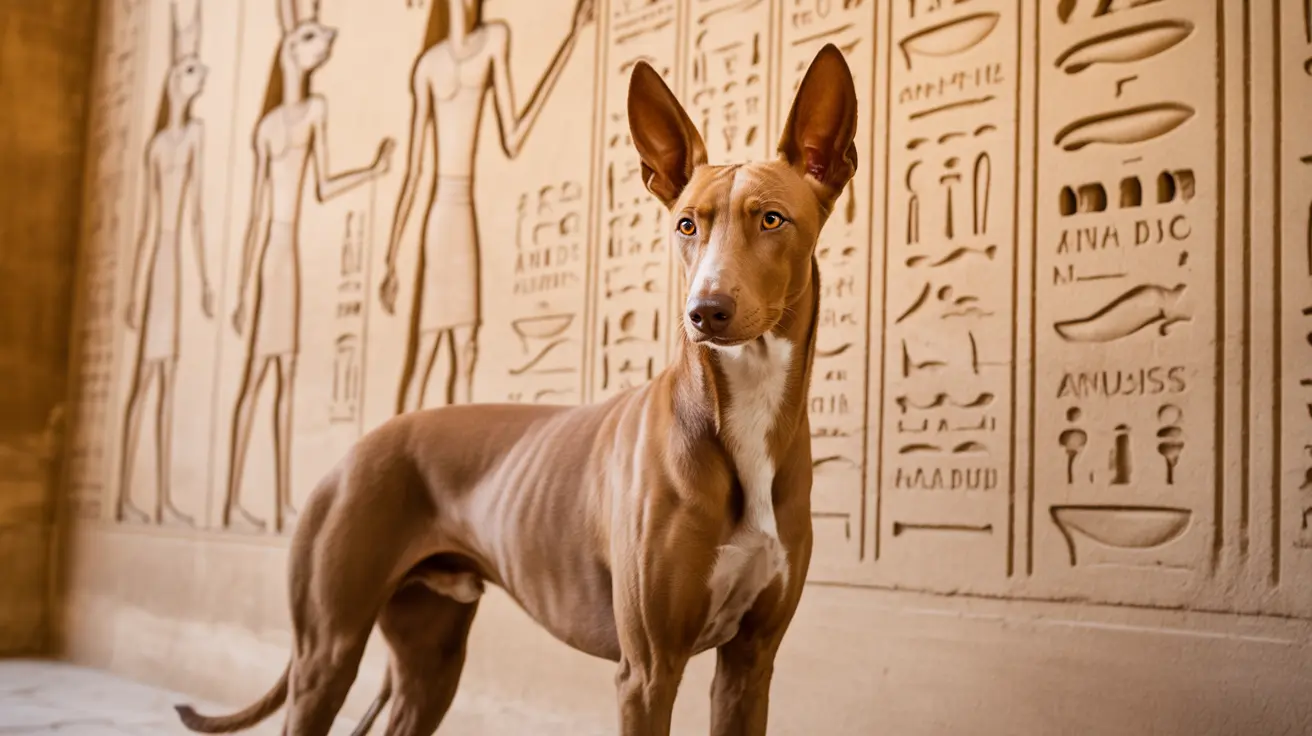The Ancient Egyptian Origins of the Anubis Dog
In ancient Egyptian mythology, Anubis was depicted as a black canine or a human figure with a canine head. The black coloration wasn't meant to represent actual fur color but rather symbolized the fertile soil of the Nile Valley and the concept of regeneration after death.
Archaeological evidence from ancient Egyptian tombs and temples reveals countless artistic representations of dog-like figures with distinctive features: tall pointed ears, sleek bodies, and long legs. These characteristics have helped researchers identify potential modern breeds that might share ancestry with the ancient Anubis dogs.
Modern Breeds Most Resembling Anubis
The Pharaoh Hound Connection
The Pharaoh Hound is often considered the closest living representation of the Anubis dog. These elegant creatures share striking similarities with ancient Egyptian depictions, including their distinctive erect ears, athletic build, and noble bearing. Most notably, Pharaoh Hounds possess the unique ability to "blush," their noses and ears turning rosy when excited or happy.
Other Ancient Breeds
Several other ancient breeds share characteristics with the Anubis imagery:
- The Basenji, known as Africa's "barkless dog"
- The Ibizan Hound, with its sleek profile and pointed ears
- The Greyhound, whose ancient lineage traces back to early Egyptian dynasties
- The Saluki, often called the "Royal Dog of Egypt"
Historical Evidence and Archaeological Findings
Excavations at Saqqara have uncovered millions of mummified dogs, suggesting a thriving culture of canine worship and ritual. These discoveries provide valuable insights into the types of dogs that ancient Egyptians associated with Anubis and their religious practices.
Many researchers believe that the original inspiration for Anubis may have come from observing wild canids, particularly the African golden wolf (formerly classified as a jackal), which frequented burial grounds in ancient times.
Cultural Impact and Modern Significance
The influence of the Anubis dog extends far beyond ancient Egypt. Today, breeds associated with Anubis are highly valued for their historical significance and unique characteristics. These dogs continue to capture imaginations and serve as living links to our ancient past.
Frequently Asked Questions
What dog breed is most closely associated with the ancient Egyptian god Anubis?
The Pharaoh Hound is most commonly associated with Anubis due to its striking physical resemblance to ancient Egyptian depictions, including its tall pointed ears, slim build, and noble bearing.
How does the Pharaoh Hound resemble the depiction of Anubis in Egyptian mythology?
Pharaoh Hounds share key physical characteristics with Anubis depictions, including their tall erect ears, long legs, sleek body structure, and alert, dignified expression. They're also known for their unique ability to "blush" when excited.
Were other dog breeds like the Basenji or Ibizan Hound linked to Anubis's image?
Yes, both the Basenji and Ibizan Hound share characteristics with Anubis imagery. The Basenji's African origins and primitive characteristics, along with the Ibizan Hound's sleek profile and pointed ears, connect them to ancient Egyptian canines.
Why is Anubis often shown with a black canine or jackal head in Egyptian art?
The black coloration in Anubis depictions was symbolic rather than literal, representing the fertile soil of the Nile Valley, regeneration, and the afterlife. It wasn't meant to indicate the actual color of the dogs associated with the deity.
What roles did dogs play in ancient Egyptian rituals and beliefs related to Anubis?
Dogs played multiple roles in ancient Egyptian rituals, serving as sacred animals, temple guardians, and ritual offerings. Millions of mummified dogs have been discovered at sites like Saqqara, demonstrating their importance in religious practices related to Anubis worship.
Through careful study of ancient artifacts, historical records, and modern breed characteristics, we continue to uncover new insights into the fascinating connection between today's dogs and their ancient Egyptian ancestors. While we may never identify a single "true" Anubis dog, the legacy of these ancient canines lives on in several remarkable modern breeds.






